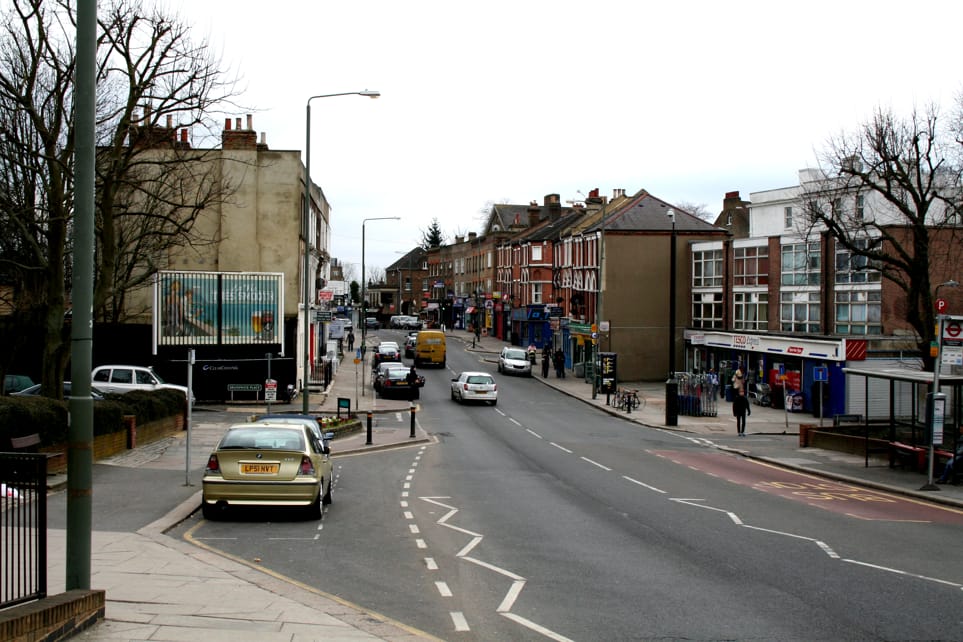
Bromley Anerley Change of Use: How Old Spaces Start New Lives
Dust gathered in forgotten corners while a faded sign clung to the window. Before that, it sold VHS tapes, cheap appliances, and whatever else could keep the doors open. Today, it pours pistachio gelato in the summer and cinnamon-spiked affogatos in the winter. Customers sit on oak stools, scrolling on sleek phones while chatting in several languages. Same walls. New pulse.
Walk through Bromley Anerley and you’ll see the shift everywhere. A garage becomes a studio for ceramicists. A former bank glows with soft lights as locals stretch in a wellness class. An empty shopfront becomes three tidy micro-flats. These changes don’t come from cranes or dramatic demolitions. They come from architects, planners, owners, and residents who see possibility where others see decay.
This movement has a name: Change of Use. On paper, it looks like paperwork and policy. In reality, it’s a quiet form of transformation that reshapes the way neighbourhoods breathe.
Key Takeaways
- Bromley Anerley holds numerous older structures that stand ready for reinvention rather than demolition.
- Change of Use unlocks new life in buildings by assigning them fresh purpose under updated Use Classes.
- Architects guide owners through drawings, design choices, and planning submissions that align with Bromley Council’s expectations.
- Local case studies show how unused shops, vaults, and commercial units can evolve into homes, studios, and community spaces.
- Conversions support sustainability, housing needs, and vibrant high streets across Bromley Anerley.
- Strong proposals rely on design clarity, planning awareness, and practical upgrades that meet modern regulations.
- Working with professionals early prevents delays, objections, and costly missteps.
What “Change of Use” Means in Bromley Anerley
Change of Use refers to the legal shift in a building’s designation. Every property falls into a “Use Class,” defining whether it operates as residential, commercial, industrial, or something specific like hospitality or community services.
In the real world, Change of Use is the switch that turns:
- a greasy spoon into a shared workspace
- an empty office into micro-homes
- a workshop into a café
- a storage unit into a barbershop or gallery
It’s a tool that adapts old structures to modern needs. And in Bromley Anerley, this shift has become more than a property strategy — it’s a lifeline for buildings that would otherwise sit empty.
Why Bromley Anerley Has Become a Hotspot for Change of Use
Bromley Anerley doesn’t try to copy central London. It doesn’t need polished boulevards or flashy developments. Its charm sits in its raw edges and the stories layered in its brickwork. Many buildings here date back decades, some even longer. Their shells stand strong, but their original purposes no longer match the pace of modern life.
This area offers something rare in London: potential without pretence.
Local streets hold underused units that feel ripe for reinvention. Owners see a chance to revive properties without buying new land. Residents benefit from fresh services on their doorsteps. Investors recognise that converting can often beat building from scratch in both cost and speed.
London architects play a key role here. They read the local language — the patterns of traffic, the history of the units, the priorities of Bromley Council, and the needs of the community. They help thread modern functions into older structures without stripping character away.
The Quiet Coalition Behind Every ConversionLondon architects
Change of Use isn’t carried by one group. It thrives because of a collective effort from people who share one thing: vision.
1. Architects
They lead the process with design insight and technical skill. They coordinate drawings, prepare planning documents, and guide each step so the conversion aligns with policy and safety requirements.
2. Homeowners
Some spot a neglected outbuilding, an unused upper floor, or an empty shop beneath their flat. With the right guidance, they turn wasted square metres into income or living space.
3. Developers
Instead of demolishing older structures, more developers in Bromley Anerley choose to adapt. It keeps character intact and trims costs.
4. Local Council
When conversions revive high streets and bring mixed uses to quiet corners, the council sees benefits too — stronger footfall, more housing, and better use of dormant land.
Every party plays a part, and none can move alone. Change of Use in Bromley Anerley succeeds only when these groups pull in the same direction.
Planning Permission: The Step That Makes or Breaks a Project
In London, planning permission often feels like solving a complicated puzzle. Change of Use adds extra layers because Use Classes aren’t always clear-cut.
Some changes fall under “permitted development rights,” which means no formal planning application is needed. Others require full approval, especially if:
- the building sits in a conservation area
- the structure is listed
- the proposal affects neighbours
- the council has placed restrictions on certain conversions
Bromley Anerley has its own policies and priorities. What worked in a nearby borough may not pass here. That’s why property owners often rely on architects who already know Bromley Council’s approach and can steer proposals toward approval instead of rejection.
Good design helps. A thoughtful statement helps. A clear plan helps. When these pieces align, even complex conversions stand a strong chance.
Real-World Stories from the Streets of Bromley Anerley
Change of Use feels abstract until you see it in action. Several recent projects in Bromley Anerley show how varied and vibrant these transformations can be.
1. The Barbershop That Became a Bookstore
A small shop struggled for years as footfall dipped. The owner partnered with a young design studio that reshaped the interior with modular shelving built into a previous Class E unit. The room now hosts readings, runs community clubs, and draws a steady stream of customers who previously walked past without stopping.
2. The Empty Bank Vault That Turned into a Wellness Studio
The vault’s awkward layout and thick walls scared off buyers. A local entrepreneur saw something else — a peaceful sanctuary shielded from outside noise. With clever lighting, soft surfaces, and subtle ventilation, the space now hosts candlelit sessions underneath the old vault door.
3. Three Flats Created from an Old Fishmonger’s
A narrow commercial unit transformed into three compact homes. Split-level layouts maximised volume. Light wells drew sunlight into deep corners. All units met policy standards and sold quickly, proving small plots can hold big value.
Each of these stories started with the same question: What else could this space be?
Change of Use gave the answer.
Why These Changes Matter for Bromley Anerley
Beyond business gains and property value, these shifts hold deeper weight.
Change of Use helps:
- cut waste by reusing structures instead of sending debris to landfill
- ease housing shortages by turning dormant units into homes
- support local businesses with more activity on the streets
- retain the historic shell of the neighbourhood while giving it new life
In a time when sustainability and community matter more than ever, reworking what already exists proves both practical and creative. Bromley Anerley’s patchwork of old and new thrives because people here choose reinvention instead of replacement.
Architects working in this area are not only designing layouts; they are rewriting the purpose of forgotten spaces. That’s part of what makes Bromley Anerley so compelling today.
FAQs About Change of Use in Bromley Anerley
Here are five new FAQs tailored for local owners, buyers, and investors:
Does Change of Use always require building work?
Not always. Some conversions need only minor adjustments, while others require structural updates, fire safety improvements, or accessibility upgrades.
Can I convert a commercial unit into short-term rental flats?
It’s possible, but you must meet space standards and comply with local rules regarding noise, access, and layout. Bromley Council may also request evidence that the commercial unit is no longer viable.
Do all Change of Use proposals need drawings from an architect?
Most do. Even small conversions benefit from accurate plans. Councils rarely approve proposals without clear drawings showing dimensions, layouts, and proposed alterations.
Can Change of Use affect my council tax or business rates?
Yes. Once the property’s use changes, the valuation category changes too. Homes fall under council tax bands. Commercial spaces fall under business rates.
What happens if I start a conversion without permission?
You risk enforcement action. The council may issue a stop notice or require you to reverse the changes. Early architectural advice prevents costly setbacks.




